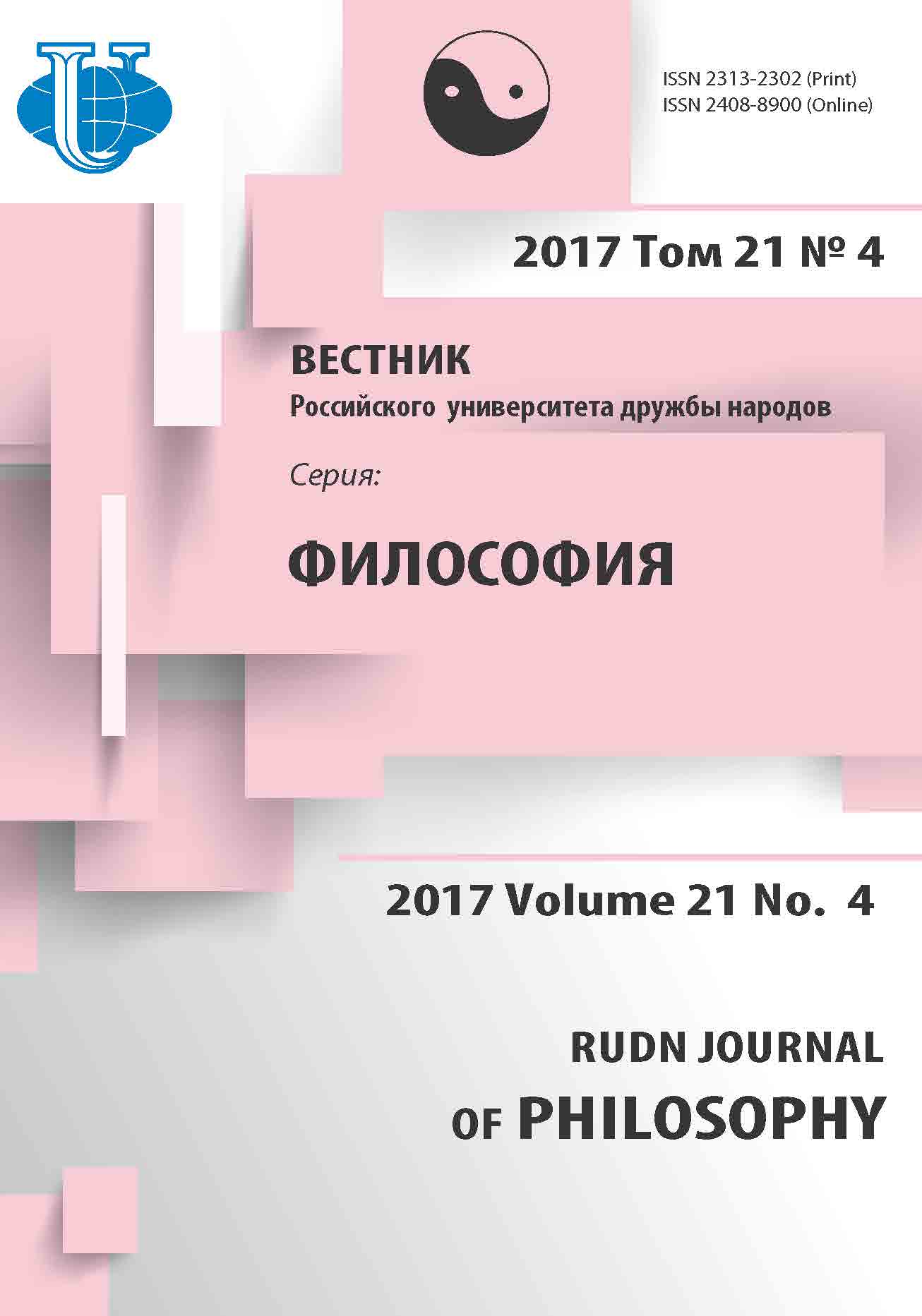SCIENCE-ART: THE UNITY OF SCIENCE AND ART
- Authors: Volnov IN1
-
Affiliations:
- Moscow Polytechnic University
- Issue: Vol 21, No 4 (2017)
- Pages: 557-564
- Section: Articles
- URL: https://journals.rudn.ru/philosophy/article/view/17666
- DOI: https://doi.org/10.22363/2313-2302-2017-21-4-557-564
Cite item
Full Text
Abstract
The article looks into the current and near-future challenges that necessitate a different lifestyle and way of thinking. The unity of science and art (Science-Art) is viewed in the context of these challenges as a way to respond to them. The article suggests building the unity of Science-Art upon the combination of the two science principles: economy of thought and redundancy of thought, which is typical for the artistic way of thinking. The article cites S. Pereslegin’s classification of thinking patterns and main features of scientific, artistic and engineering ways of thinking. The article shows impossibility of Science-Art within scientific monolectical thinking. It demonstrates that the condition for the unity of science and art is rising to dia- and trialectic levels of thinking; and the carriers of the Science-Art unity are currently engineers.
About the authors
I N Volnov
Moscow Polytechnic University
Author for correspondence.
Email: ilja-volnov@yandex.ru
Вольнов Илья Николаевич - кандидат технических наук, директор Центра технологической поддержки образования и доцент кафедры «Машины и технология литейного производства» Московского политехнического университета
38, Bolshaya Semenovskaya str., 107023, Moscow, Russian FederationReferences
- Kapitsa SP, Kurdyumov SP, Malinetskii GG. Sinergetika i prognozy budushchego. Moscow: Editorial URSS; 2003. (In Russ.)
- Panov AD. Singulyarnaya tochka istorii. Obshchestvennye nauki i sovremennost'. 2005;(1): 122—137. (In Russ.)
- Kurtsveil R. Evolyutsiya razuma. Moscow: Eksmo; 2016. (In Russ.)
- Pereslegin SB, Pereslegina EB. «Dikie karty» budushchego. Fors-mazhor dlya chelovechestva. Moscow: Algoritm; 2015. (In Russ.)
- Vol'nov IN. Bol'shoi semanticheskii perekhod. Filosofiya i kul'tura. 2016;(3):368—375. (In Russ.)
- Nalimov VV. V poiskakh inykh smyslov. Saint Petersburg; Moscow: Tsentr gumanitarnykh initsiativ; 2013. (In Russ.)
- Snou ChP. Dve kul'tury. Moscow: Progress; 1973. (In Russ.)
- Feinberg EL. Dve kul'tury. Intuitsiya i logika v iskusstve i nauke. Moscow: Nauka; 1992. (In Russ.)
- Stepin VS. Filosofiya nauki. Obshchie problemy. Moscow: Gardariki; 2006. (In Russ.)
- Ikona XXI veka. Kuznetsovskoe pis'mo. Avt. i sost. Kondrat'eva KL. Moscow; 2010. (In Russ.)
- Vol'nov IN. Kuznetsovskoe pis'mo — novatorstvo v sovremennoi ikonopisi. Observatoriya kul'tury. 2012;(5):49—55. (In Russ.)
- Malinetskii GG. Chtob skazku sdelat' byl'yu.. Vysokie tekhnologii — put' Rossii v budushchee. Moscow: Knizhnyi dom «LIBROKOM»; 2014. (In Russ.)
- Nikitin V, Pereslegin S, Paribok A. Inzhenernaya ontologiya. Inzheneriya kak stranstvie. Uchebnoe posobie. Ekaterinburg: Izdatel'skii Dom «Azhur»; 2013. (In Russ.)
- Al'tshuller G. Naiti ideyu: Vvedenie v TRIZ — teoriyu resheniya izobretatel'skikh zadach. Moscow: Al'pina Pablisher; 2016. (In Russ.)
















